European Shag, Kuifaalscholver, Krahenscharbe, Corvo-marinho-de-crista, Cormorán Moñudo
Spotted in the Alentejo region of Portugal. European Shag sound
The European shag or common shag (Phalacrocorax aristotelis) is a species of cormorant. It breeds around the rocky coasts of western and southern Europe, southwest Asia and north Africa, mainly wintering in its breeding range except for the northernmost birds. In Britain this seabird is usually referred to as simply the shag. The scientific genus name is Latinised Ancient Greek, from phalakros, “bald” and korax, “raven”. The species name aristotelis commemorates the Greek philosopher Aristotle.
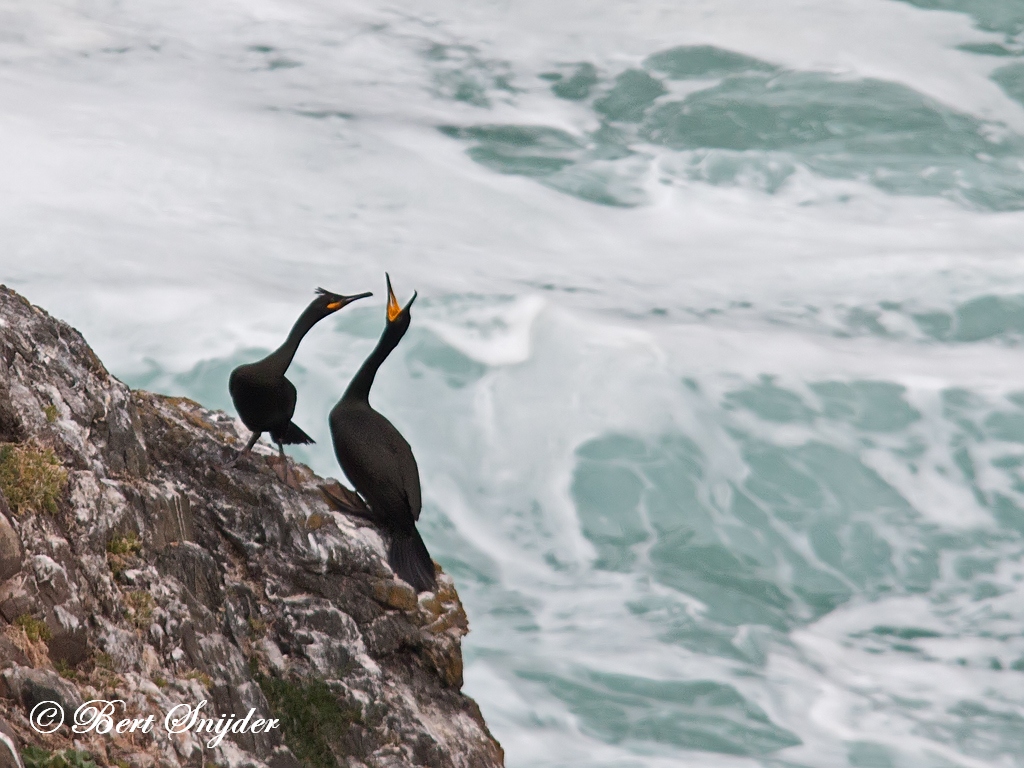
More photos at the bottom of this page:
This is a medium-large black bird, 68 to 78 cm (27 to 31 in) long and with a 95-to-110-centimetre (37 to 43 in) wingspan. It has a longish tail and yellow throat-patch. Adults have a small crest in the breeding season. It is distinguished from the great cormorant by its smaller size, lighter build, thinner bill, and, in breeding adults, by the crest and metallic green-tinged sheen on the feathers. Among those differences are that a shag has a lighter, narrower beak; and the juvenile shag has darker underparts. The European shag’s tail has 12 feathers, the great cormorant’s 14 feathers. The green sheen on the feathers results in the alternative name green cormorant sometimes being given to the European shag.
It feeds in the sea, and, unlike the great cormorant, is rare inland. It will winter along any coast that is well-supplied with fish.
Eggs, Collection Museum Wiesbaden
The European shag is one of the deepest divers among the cormorant family. Using depth gauges, European shags have been shown to dive to at least 45 m (148 ft). European shags are preponderantly benthic feeders, i.e. they find their prey on the sea bottom. They will eat a wide range of fish but their commonest prey is the sand eel. Shags will travel many kilometres from their roosting sites in order to feed.
In UK coastal waters, dive times are typically around 20 to 45 seconds, with a recovery time of around 15 seconds between dives; this is consistent with aerobic diving, i.e. the bird depends on the oxygen in its lungs and dissolved in its bloodstream during the dive. When they dive, they jump out of the water first to give extra impetus to the dive.
It breeds on coasts, nesting on rocky ledges or in crevices or small caves. The nests are untidy heaps of rotting seaweed or twigs cemented together by the bird’s own guano. The nesting season is long, beginning in late February but some nests not started until May or even later. Three eggs are laid. Their chicks hatch without down and so they rely totally on their parents for warmth, often for a period of two months before they can fly. Fledging may occur at any time from early June to late August, exceptionally to mid-October.
Subspecies
There are three subspecies:
P. a. aristotelis – (Linnaeus, 1761): nominate, found in northwestern Europe (Atlantic Ocean coasts)
P. a. desmarestii – (Payraudeau, 1826): found in southern Europe, southwest Asia (Mediterranean and Black Sea coasts)
P. a. riggenbachi – Hartert, 1923: found in northwest African coast
The subspecies differ slightly in bill size and the breast and leg colour of young birds. Recent evidence suggests that birds on the Atlantic coast of southwest Europe are distinct from all three, and may be an as-yet undescribed subspecies.
The name shag is also used in the Southern Hemisphere for several additional species of cormorants.
The European shag can be readily be seen at the following breeding locations in the season (late April to mid July): Farne Islands, England; Deerness and Fowlsheugh, Scotland; Runde, Norway; Iceland, Faroe Islands and Galicia. In April 2017, eight new European shags were born in Monaco.
The largest colony of European shags is in the Cíes Islands, with 2,500 pairs (25% of the world’s population).
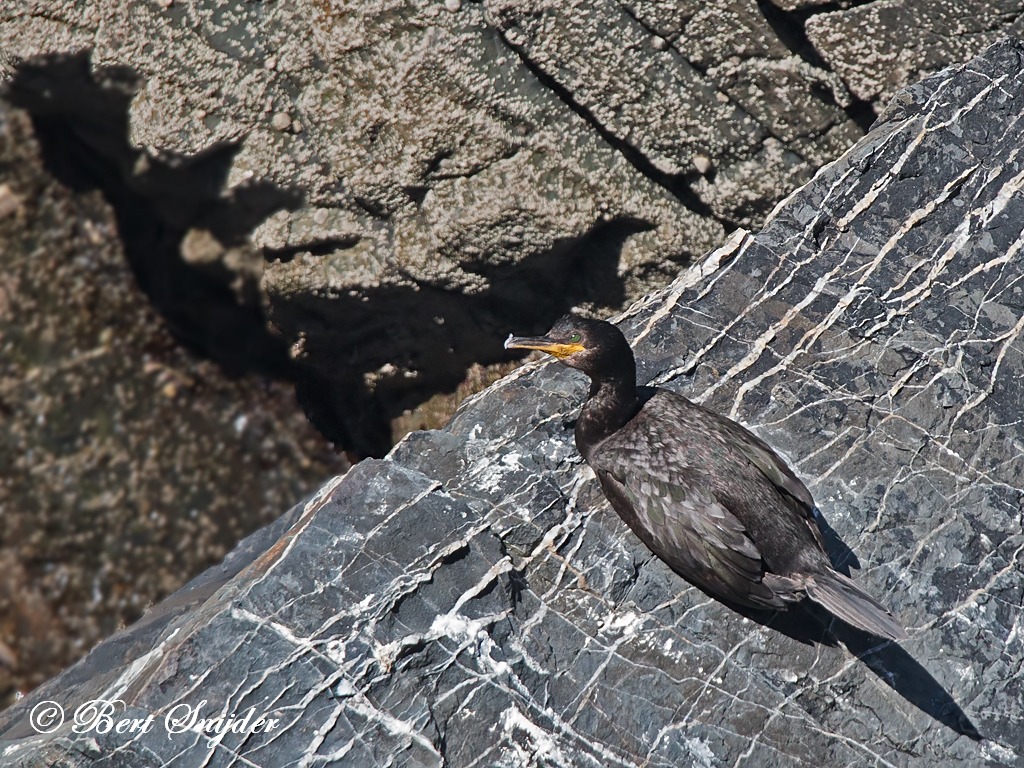
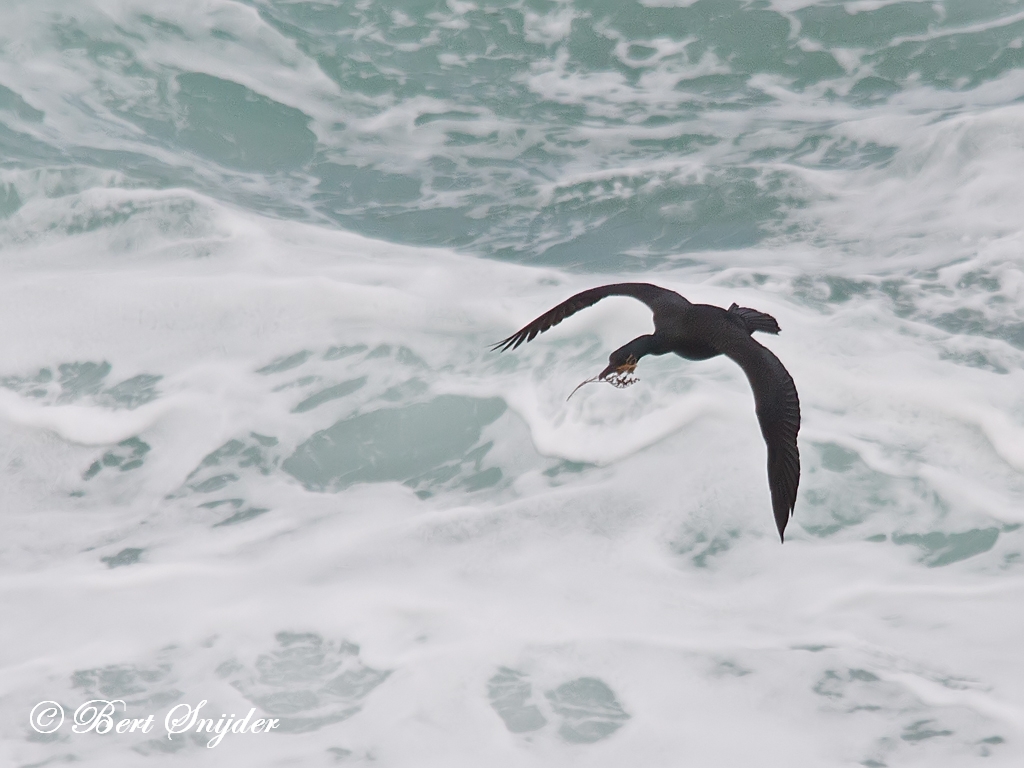
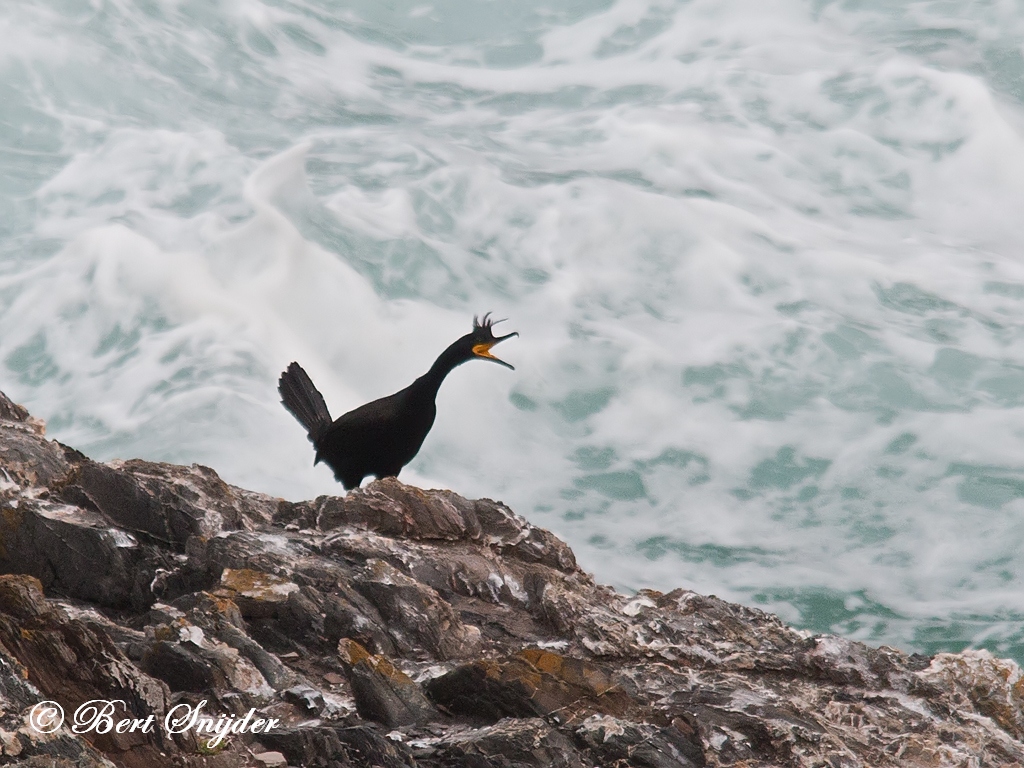

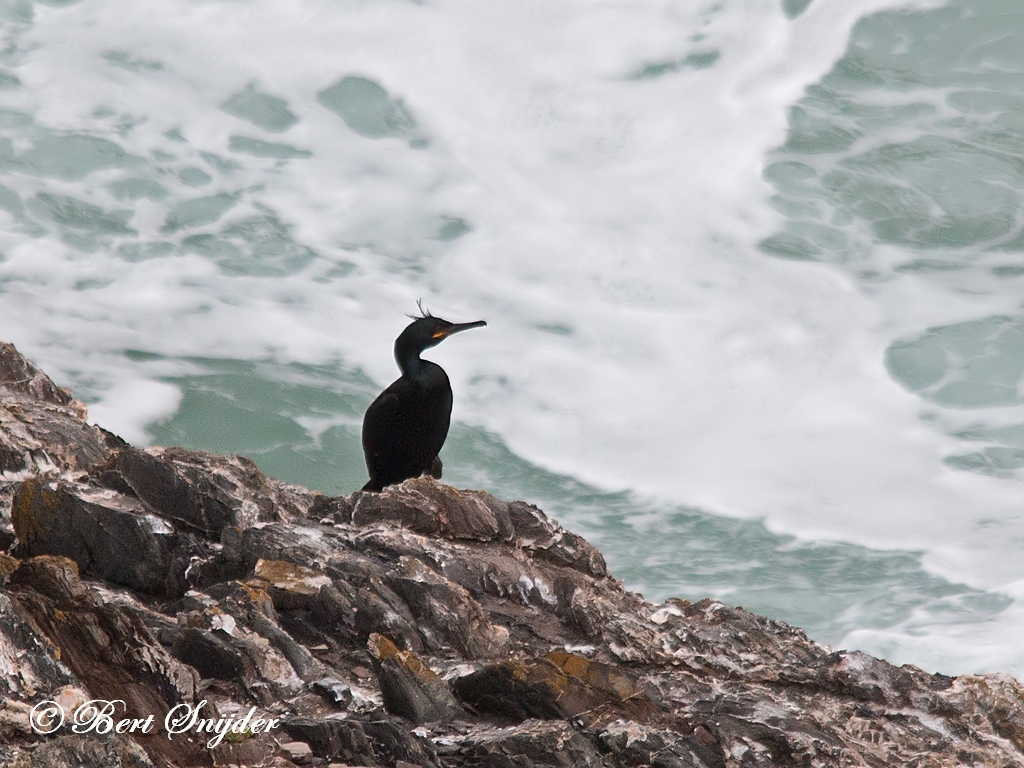

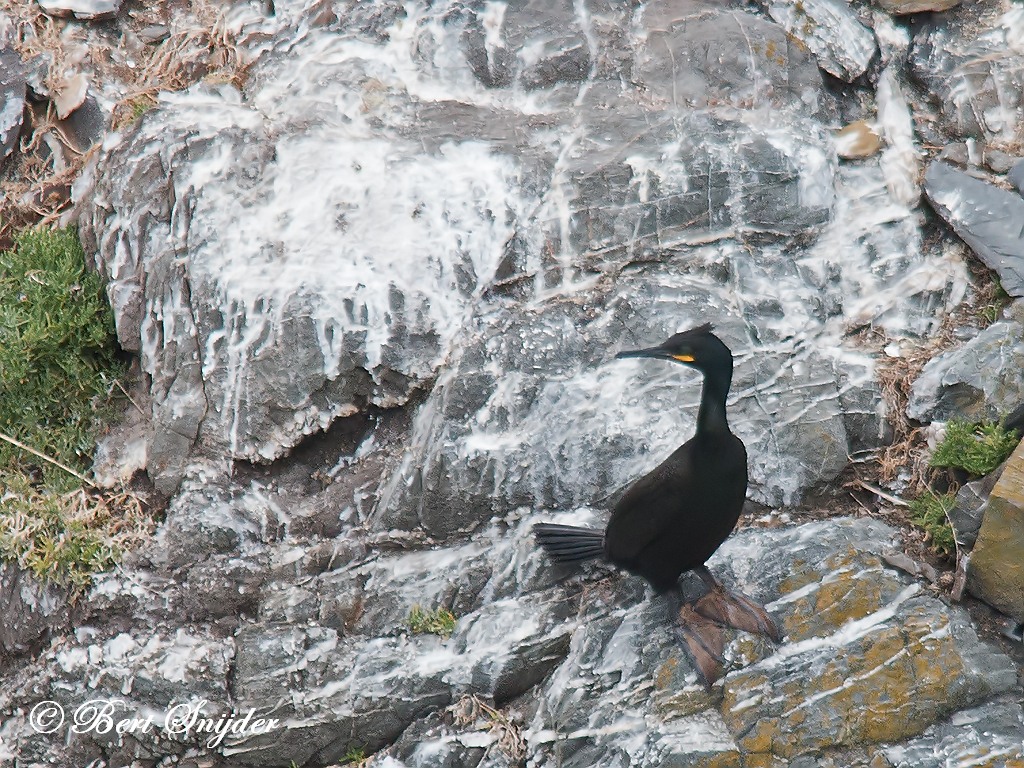
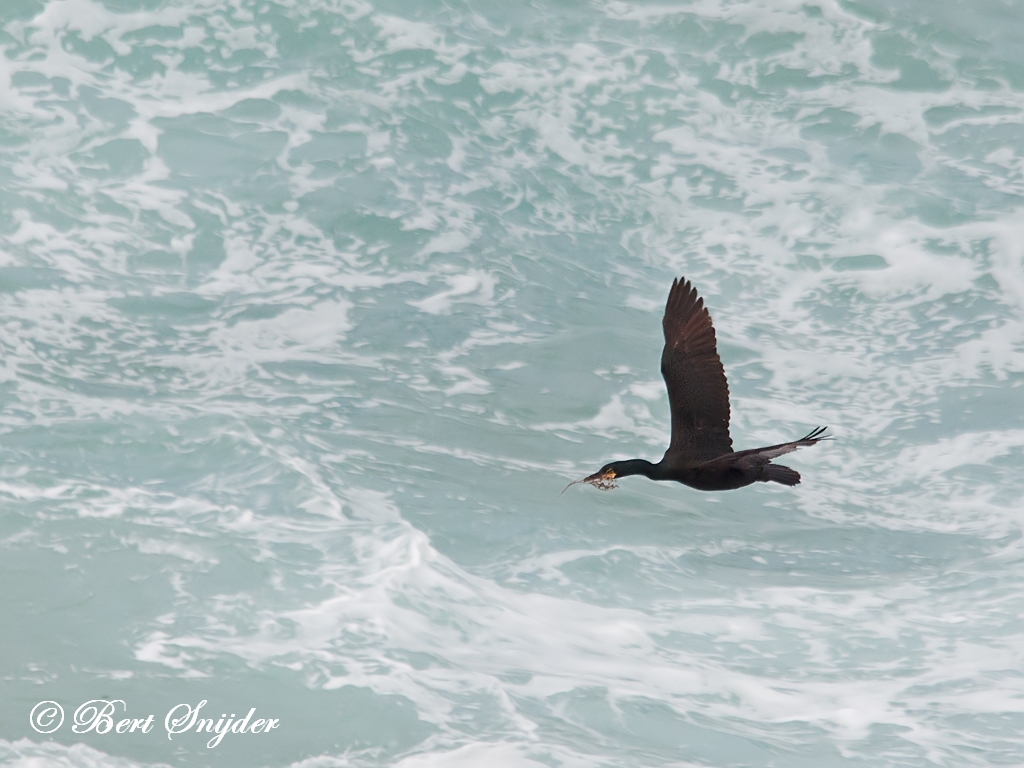
Other synonyms:
Asturian: Mavea
Breton: Ar vorvran-kuchenn, Morvaout kuchenn
Catalan: Corb marí, Corb marí emplomallat
Catalan (Balears): Corb marí
Czech: Kormorán chocholatý
Welsh: Mulfran gopog, Mulfran werdd
Danish: Topskarv
German: Kraehenscharbe, Krahenscharbe, Krähenscharbe, Krähensharbe
English: Common Cormorant, Common Shag, European Shag, Green Cormorant, Green Shag, Shag
Esperanto: Tufkormorano
Spanish: Cormorán Europeo, Cormorán Moñudo
Estonian: karikarbas, Karikormoran, karikormoran (karikarbas), karikormoran e. karikarbas
Basque: Corb marí emplomallat, Ubarroi mottoduna
Finnish: Karimetso
Faroese: Hin tunguleysi, Skankur, Skarvur, Sóttræ
French: Cormoran huppé, Cormoron huppé, Stictocarbo aristotelis
Irish: Scaga, Seaga
Gaelic: Sgarbh an Sgùmain
Galician: Corb marí emplomallat, Corvo mariño cristado
Manx: Arragh Vooar, Fannag Varrey, Feeagh Varrey, Shag
Croatian: Morski Vranac
Hungarian: Üstökös kárókatona
Icelandic: Toppskarfur
Italian: Marangone dal ciuffo
Japanese: yoaroppahimeu, yo-roppahimeu
Cornish: Spylgarn
Latin: Leucocarbo aristotelis, Phalacrocorax aristotelis, Stictocarbo aristotelis
Lithuanian: Kuoduotasis kormoranas
Maltese: Margun tat-Toppu
Dutch: Kuifaalscholver, Kuifallscholver
Norwegian: Småskarv, Toppskarv
Polish: kormoran czubaty
Portuguese: corvo marinho de crista, Corvo-marinho-de-crista, Galheta
Romansh: Cormoran da la cresta, Muetta gronda
Russian: Khokhlaty Baklan
Northern Sami: Skárffaš
Slovak: kormorán chochlatý
Slovenian: vranjek
Albanian: Karabullaku me çafkë
Serbian: cubasti kormoran
Swedish: Toppskarv
Turkish: Tepeli Karabata
Birding Birdwatching Holiday Alentejo, Vacation Portugal for birders guided birdwatching Tours and Trips.